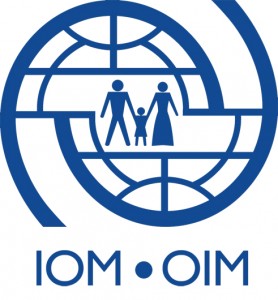The age of migration
 As migration becomes the mega-trend of our time it is becoming increasingly necessary to critically observe the current attitudes towards migrants, according to a global authority on migrations.
As migration becomes the mega-trend of our time it is becoming increasingly necessary to critically observe the current attitudes towards migrants, according to a global authority on migrations.
Migration has always, and will always be, a constant occurrence globally, yet the current perception of the happening is one of shock and negativity, says Director General of the International Organization for Migration (IOM) William Lacy Swing.
Mainstream media tends to portray migration as an unreliable, catastrophic event that can’t be controlled, he says.
Coverage is constantly of seemingly un-empowered, desperate shipwrecked asylum seekers attempting to escape their old lives in the hopes of making better ones in a new country.
While this coverage is necessary and extraordinarily important, it is only one tiny part of the picture.
Migrants, asylum seekers and refugees are humans that constantly provide positive contributions to society.
Mr Swing recently outlined these issues in an article pleading for an improved dialogue on migration.
“Migrants must not be seen merely as miserable wretches, the flotsam of a world that doesn’t care. Migration is not a catastrophe, nor is it an invasion. Often, it isn’t even an emergency. It is, as throughout history, an inevitability,” Mr Swing wrote.
“People move to improve their lives, whether that means access to a better food supply or simply a better chance of surviving conflict.”
The IOM aims to ensure all international migrants and internally displaced persons are not only treated with dignity but also recognised for the contributions they make to society. This is no easy task in the face of anti-migrant attitudes and policies.
The IOM constantly seeks to educate governments and the public on the positive roles that migrant populations can have in addressing demographic, labour market and economic trends.
“Migration, as well as being humankind’s oldest poverty reduction strategy, has also invariably been a force for good in terms of human development,” Mr Swing said.
In 2013, remittances to developing countries topped $400 billion, an increase of 3.5 percent on the previous year. This growth is projected to continue, reaching $454 billion by the end of this year.
“Acceptance of migration, and thus of migrants, will be a key factor in determining economic success or failure in the decades to come.”
Though currently 50% of international migrants live in just 10 countries, this is changing. In 2013, the United States had 45.8 million international migrants, Russia (11 million), Germany (9.8 million), Saudi Arabia (9.1 million) and Britain and the United Arab Emirates (7.8 million each) combined.
Between 2000 and 2013 China’s international migrants increased by 50%, and in 2013, 13.7 million migrants moved North-South, in a new and growing dynamic.
“Transportation is now cheaper and reaches more destinations than ever, and the skills that we possess have become more transportable, more adaptable as the world globalizes,” Mr Swing said.
The accessibility of change has empowered many, though the reasons are varied and the end result is not necessarily a perfect ending.
“Some choose to leave, some are compelled by disaster, conflict or persecution, but all leave behind all that they once knew and loved as familiar and safe.”
Compassion is essential to not only creating a welcoming environment and appreciating the positive contributions of migrants, but also in finding solutions to managing one of our biggest trends.
“Yes, this is the age of migration. Migration cannot be stopped, cannot be contained. It is a phenomenon, brought to life by the dreams and hopes of the impoverished and the terrified,” Mr Swing said.
“Their movement, be it in dribs and drabs, or in a sudden rush that captures every headline, must be managed. Borders must be protected; states must be in control of who remains on their territory. But this must be underpinned by humanitarian border management. There must be a place for those in distress, whose habitats are under threat, or those in dire need of protection,” he said.
Laurie Nowell
AMES Senior Journalist












